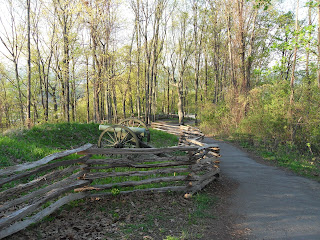On June 4, 1864, Sherman's army had reached Allatoona and flanked Confederate General Johnston out of his position near New Hope Church. Johnston fell back to Kennesaw Mountain in order to block Sherman’s advance. Hood’s corps was placed on the right flank of Johnston's Army. The Battle of Kenesaw Mountain occurred on 27 June, when Sherman ordered a general assault against the Confederate positions which ended in failure within a few hours. After the battle, Sherman again chose to maneuver around Johnston's position, crossing the Chattahoochee on 9 July. This manuever forced Johnston to abandon his defense on Kennesaw Mountain and fall back to the city of Atlanta. Private Lambert, assigned to the same regiment as G.W. Askew, described Sherman’s flanking maneuvers, "We held our line some two weeks or more, as best I remember now, without any further desperate attempts on General Sherman’s part, but he finally started getting around in our rear again, causing us to again fall back to a defensible position, which was Kennesaw mountain, Marietta, and Powder Springs, where we locked horns, more or less, for a number of days; and the same performance was again forced on us. This time we fell back across the Chattahoochee River to Atlanta, but Sherman dropped down the river, and his army crossed on pontoon bridges." (R. A. Lambert, “In the Georgia Campaign” Confederate Veteran, (1930) 38: 21.)
Confederate President Jefferson Davis, displeased with Johnston's performance, replaced him with General Hood on 18 July. Lambert described the affect on the 42nd Alabama soldiers upon hearing the news of Hood replacing Johnston, “The effect of this change . . . can best be compared to a very warm man wearing a suit of thin underclothing and having a very cold, wet blanket thrown over him.”
After visiting the park it is easy to understand why Johnston chose this terrain for his attempt to stop Sherman's advance. It is clearly the key geographic feature with a commanding view of the approaches to Atlanta. Sherman was indeed wise to manuever around this formidable obstacle after his initial attempt failed. Below is a photo of Kennesaw Mountain from the Union position, photo was taken shortly after the Civil War.
The below photos were taken from the Confederate positions atop Kennesaw Mountain during last week's trip.





No comments:
Post a Comment